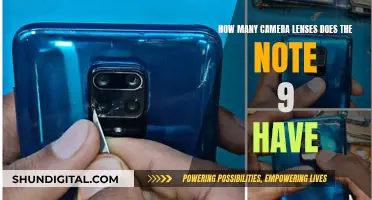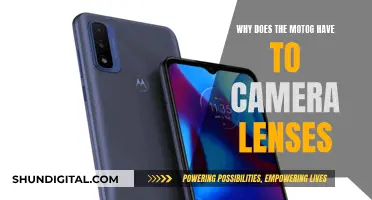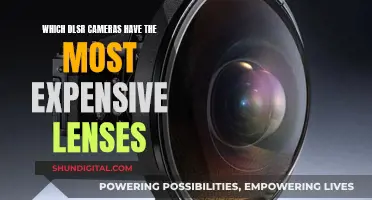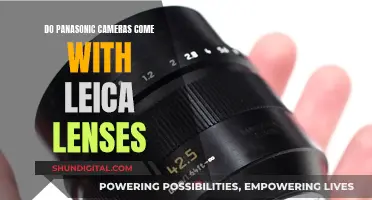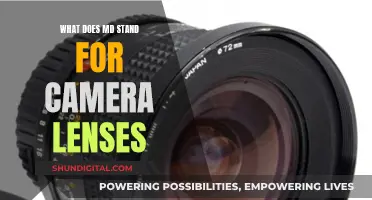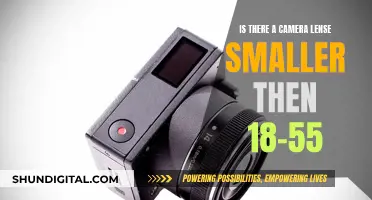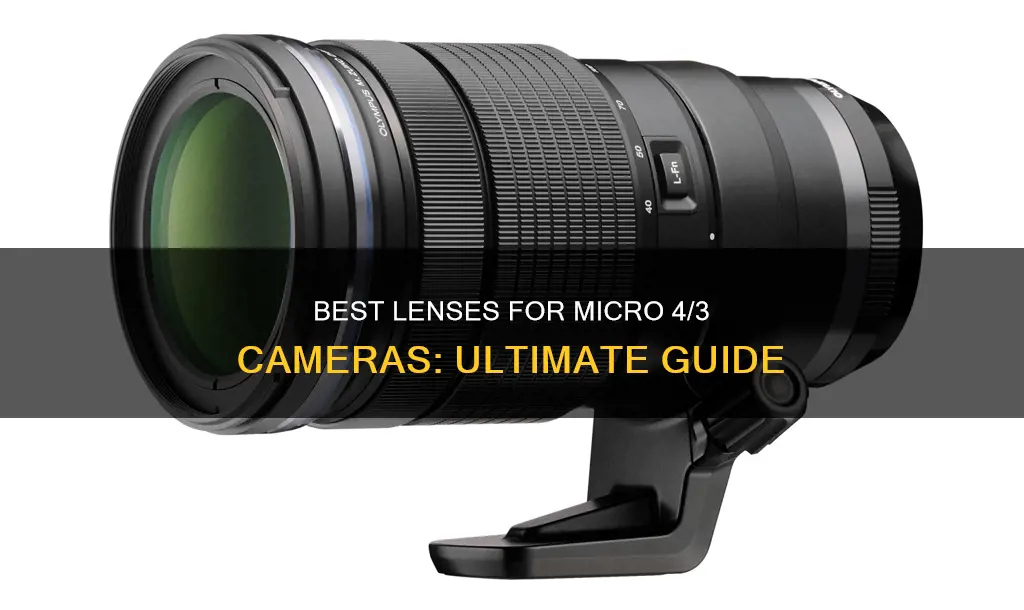
The Micro Four Thirds system, often abbreviated to MFT or M4/3, is a standard developed by Olympus and Panasonic in 2008 for the design and development of cameras and lenses for the mirrorless format. Micro Four Thirds cameras offer many of the advantages of the latest APS-C sensor mirrorless cameras, but at smaller overall sizes and more competitive prices.
Micro Four Thirds lenses are generally smaller and cheaper than DSLR lenses because the cameras have smaller sensors. The Micro Four Thirds system is especially appealing for photographers who use telephoto lenses, as these types have longer focal lengths, so they capture a narrower angle. They are also ideal for shooting wildlife and for getting great shots of team sports from the sidelines or stands.
- Panasonic Lumix G X Vario 12-35mm f/2.8 II Asph Power OIS
- Panasonic Leica DG Nocticron 42.5mm f/1.2 Asph Power OIS
- Olympus M.Zuiko 7-14mm f/2.8 Pro
- Olympus M.Zuiko 25mm f/1.8
- Olympus M.Zuiko 60mm f/2.8 Macro
- Olympus M.Zuiko 75mm f/1.8
- Olympus M.Zuiko 40-150mm f/2.8 Pro
- Olympus M.Zuiko 12-200mm f/3.5-6.3
- Sigma 30mm f/1.4 DC DN | C
- Laowa 10mm f/2 Zero-D
| Characteristics | Values |
|---|---|
| Olympus Micro 4/3 lenses | Olympus M.Zuiko 7-14mm f/2.8 PRO ED, Olympus M.Zuiko 8mm f/1.8 Fisheye PRO ED, Olympus M.Zuiko ED 8-25mm f/4 PRO, Olympus M.Zuiko 9mm f/8 Fisheye Body Cap, Olympus M.Zuiko 9-18mm f/4-5.6 ED, Olympus M.Zuiko 12mm f/2 ED, Olympus M.Zuiko 15mm f/8 Body Cap, etc. |
| Panasonic Micro 4/3 lenses | Panasonic Lumix G Vario 7-14mm f/4 ASPH, Panasonic Lumix G 8mm f/3.5 fisheye, Panasonic Leica DG Vario-Elmarit 8-18mm f/2.8-4 ASPH, Panasonic Leica DG Summilux 9mm f/1.7, Panasonic Leica DG Vario-Summilux 10-25mm f/1.7 ASPH, Panasonic Leica DG 12mm f/1.4 ASPH, etc. |
| Third-party lenses | Tamron, Sigma, Tokina, Laowa, Zhong Yi, Samyang, Voigtlander, Yasuhara, Kipon, Meike, 7Artisans, Zeiss, Fujinon, Gizmon, Kowa, etc. |
What You'll Learn
- Wide-angle lenses: These lenses have a focal length of less than 10mm and are perfect for capturing landscapes, architecture, and indoor photography
- Standard lenses: With a focal length between 17mm and 35mm, these lenses are ideal for everyday photography and offer a versatile range of options
- Telephoto lenses: With a focal length beyond 35mm, these lenses are great for wildlife photography and sports events, as they provide a narrower angle of view
- Macro lenses: Macro lenses are designed for close-up photography, allowing you to focus on minuscule subjects and magnify them while maintaining the ability to capture distant subjects
- Prime lenses: Prime lenses have a fixed focal length and are known for their compact size and ability to gather more light, making them ideal for low-light conditions and creating a pleasing background blur

Wide-angle lenses: These lenses have a focal length of less than 10mm and are perfect for capturing landscapes, architecture, and indoor photography
Wide-angle lenses are a staple in the kit of most landscape photographers. With a focal length of 35mm or shorter, they offer a wide field of view, allowing you to capture sweeping vistas, starry nights, and impressive architectural shots.
For micro 4/3 cameras, a wide-angle lens would have a focal length of less than 10mm. The Rokinon 12mm f/2 (also known as the Samyang 12mm) is a great option in this category. Despite being a manual focus lens, it delivers exceptional image quality at half the price of its autofocus competitors. Its maximum aperture of f/2 lets in enough light for evening shots, and its bulky nature is a small trade-off for the sharp, vibrant images it produces.
Another option to consider is the Olympus M.Zuiko ED 8mm F1.8 Fisheye Pro, which offers an ultra-wide field of view of 180 degrees. This lens is perfect for those who want to capture unique, distorted images with a circular, fisheye look.
Wide-angle lenses are also well-suited for travel photography, as their short focal length gives you the versatility to capture a multitude of scenes. They are ideal for making small spaces, such as cityscapes or indoor locations, feel more expansive and impressive.
However, it is important to note that wide-angle lenses can distort images, especially when photographing people. They can elongate noses and chins and make heads look larger, so they are not typically used for portrait photography.
When choosing a wide-angle lens for your micro 4/3 camera, consider your budget, the specific focal length you require, and the type of images you want to capture.
GoPro Hero 6: Are Older Lenses Compatible?
You may want to see also

Standard lenses: With a focal length between 17mm and 35mm, these lenses are ideal for everyday photography and offer a versatile range of options
Standard lenses are ideal for everyday photography, offering a versatile focal length between 17mm and 35mm. This range is perfect for capturing a variety of subjects, from landscapes to portraits, with excellent image quality.
The Panasonic Lumix G 25mm f/1.7 is an excellent choice for those seeking a standard lens. Its compact size and affordable price make it a perfect starting point for creative photography, offering a brighter aperture than a kit zoom. For a slightly wider option, the Panasonic Leica DG 15mm f/1.7 or the Olympus M.Zuiko Digital 17mm f/1.8 are excellent choices, offering similar image quality and a more compact size.
If you're looking for a premium standard lens, the Olympus M.Zuiko Digital ED 12-40mm f/2.8 PRO is a great option. It offers a versatile 24-80mm equivalent range with a constant f/2.8 aperture, perfect for low-light conditions and achieving a shallow depth of field. The Panasonic Leica DG Vario-Elmarit 12-60mm f/2.8-4 OIS is another excellent choice, offering a longer 24-120mm equivalent range and optical stabilisation.
For an even longer range, the Olympus M.Zuiko Digital ED 12-100mm f/4 IS PRO is a fantastic lens, providing a 24-200mm equivalent range and optical stabilisation. This lens is ideal for photographers who want a versatile zoom with excellent image quality.
These standard lenses offer a versatile range of options for everyday photography, allowing you to capture stunning images with your micro 4/3 camera.
The High Cost of Camera Lenses: Why So Expensive?
You may want to see also

Telephoto lenses: With a focal length beyond 35mm, these lenses are great for wildlife photography and sports events, as they provide a narrower angle of view
Telephoto lenses are a must-have for any photographer looking to capture distant subjects such as wildlife or sports events. With a focal length beyond 35mm, these lenses bring far-away objects closer to the camera, providing a narrower angle of view that is perfect for when you can't get physically closer to your subject.
The Micro Four Thirds system is especially appealing for photographers who use telephoto lenses, as the smaller sensor size means that these lenses are more compact and lightweight than their full-frame counterparts, without sacrificing image quality. For example, the Panasonic 35-100mm f/2.8 II lens is a fast telephoto zoom lens equivalent to a 70-200mm lens in full-frame terms, but is less than half the size and weight, making it a much more manageable and enjoyable shooting experience.
When choosing a telephoto lens, it's important to consider the aperture, as this will affect your ability to shoot in low-light conditions and create a shallow depth of field. Lenses with a larger maximum aperture, such as f/2.8, will be brighter and better suited for low-light photography, but they also tend to be more expensive. For example, the Panasonic Leica 12-60mm f/2.8-4.0 is a good mid-price zoom lens, while the Olympus 300mm f/4 and Panasonic 200mm f/2.8 are premium options with brighter apertures.
If you're looking for a more affordable option, the Olympus 40-150mm f/4-5.6 is a great choice, offering impressive sharpness and autofocus performance at a bargain price. However, it's important to note that the variable aperture of this lens may limit your low-light capabilities.
For even greater reach, consider a super-telephoto lens with a focal length above 300mm. These lenses offer the most magnification and are ideal for sports, wildlife, and astrophotography. However, due to their size and weight, they typically require the use of a tripod. The Panasonic 100-300mm II is a good starting point, offering weather sealing and a focal length range that is perfect for backyard birding or sports photography.
In conclusion, telephoto lenses are a valuable addition to any photographer's kit, especially those who specialise in wildlife or sports photography. The Micro Four Thirds system offers a range of compact and lightweight telephoto options that deliver impressive image quality, making it a popular choice for photographers seeking the benefits of a larger sensor without the bulk and expense.
Camera Lenses: Flattering or Distorting Reality?
You may want to see also

Macro lenses: Macro lenses are designed for close-up photography, allowing you to focus on minuscule subjects and magnify them while maintaining the ability to capture distant subjects
Macro lenses are designed for close-up photography, allowing you to focus on minuscule subjects and magnify them while maintaining the ability to capture distant subjects.
The Panasonic Lumix G Macro 30mm F2.8 ASPH Mega OIS is a well-priced, stabilized lens for close-up work that provides genuine 1:1 magnification (meaning that subjects can be rendered actual size on the camera sensor). The 60mm equivalent focal length, combined with a minimum focus distance of 10cm (4.1"), means that at short focus distances, you may find the front of the lens is very close to your subject.
If you want a longer focal length, the Olympus M.Zuiko Digital ED 60mm F2.8 Macro also offers true 1:1 magnification, but its longer focal length means this is achieved at 19cm (7.5") away from the subject. This gives a better working distance between the lens and your subject, which also makes it easier to light.
For a middle-ground option, the Panasonic Leica DG Macro-Elmarit 45mm F2.8 ASPH OIS is a good choice. With a 90mm equivalent field-of-view, compact design, and 15cm (5.9") minimum focus distance, it gives a good working distance. Lens stabilization boosts its appeal.
Our favourite macro lens for Micro Four Thirds is the OM System M.Zuiko Digital ED 90mm F3.5 Macro IS PRO. It's the only lens of its type that includes both 2:1 magnification and autofocus. It also supports teleconverters for a tighter frame and 4:1 magnification.
Camera Lens Cleaning: Professional Services for Sparkling Optics
You may want to see also

Prime lenses: Prime lenses have a fixed focal length and are known for their compact size and ability to gather more light, making them ideal for low-light conditions and creating a pleasing background blur
Prime lenses are a great addition to your Micro 4/3 camera kit. They have a fixed focal length and are known for their compact size and ability to gather more light, making them ideal for low-light conditions and creating a pleasing background blur.
The Panasonic Leica DG Summilux 9mm f/1.7 ASPH is a great choice for landscape photographers. It's a recent addition to the Micro 4/3rds lens lineup, delivering an angle of view equivalent to an 18mm lens on a 35mm camera. It's small and light, with a minimum focus distance of 9.5cm, making it perfect for creating unique close-up compositions with soft backgrounds and beautiful bokeh.
For portrait photography, the Leica DG Nocticron 42.5mm f/1.2 ASPH Power OIS is an excellent choice. With an equivalent focal length of 50mm, it provides a naturalistic perspective for environmental portraits. It has an extremely shallow depth of field, allowing you to create images with dreamlike bokeh.
The Panasonic Lumix G 20mm f/1.7 II ASPH is another versatile prime lens. With an equivalent focal length of 40mm, it's perfect for general-purpose photography. It's incredibly lightweight, making your camera system more compact. While autofocus could be faster, this lens delivers impressive image quality, with crisp and detailed images even at its maximum aperture of f/1.7.
The Olympus M.Zuiko Digital ED 17mm f/1.8 is another excellent prime lens for street photography. With an equivalent focal length of 35mm, it's small and light, making it a perfect complement to compact MFT cameras. It has a fast maximum aperture of f/1.8, allowing you to shoot in low light and create pleasing bokeh when used up close to your subject.
Lastly, the Olympus M.Zuiko Digital ED 45mm f/1.8 is a tiny yet powerful lens. With an equivalent focal length of 90mm, it's perfect for casual portraits, delivering soft backgrounds. Despite the Micro 4/3 system's smaller sensor size, this lens still provides pleasing background blur, and you can always soften the background further in post-processing.
These prime lenses offer a range of focal lengths to suit various photography needs, from street and landscape to portrait photography. Their compact size and low light capabilities make them a great addition to your Micro 4/3 camera kit, allowing you to capture stunning images in a variety of lighting conditions.
Best Camera Lenses for Long-Distance Shooting
You may want to see also


